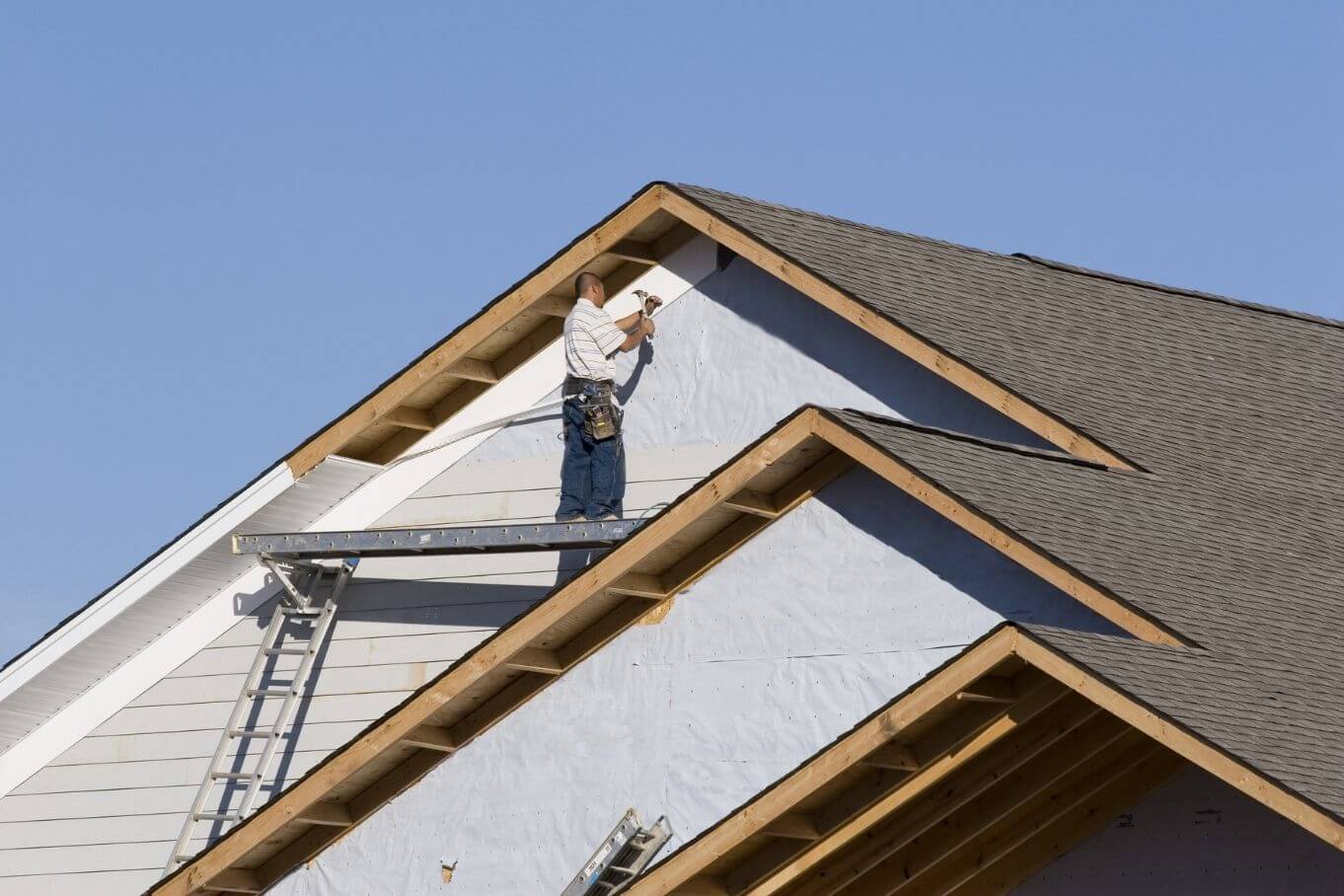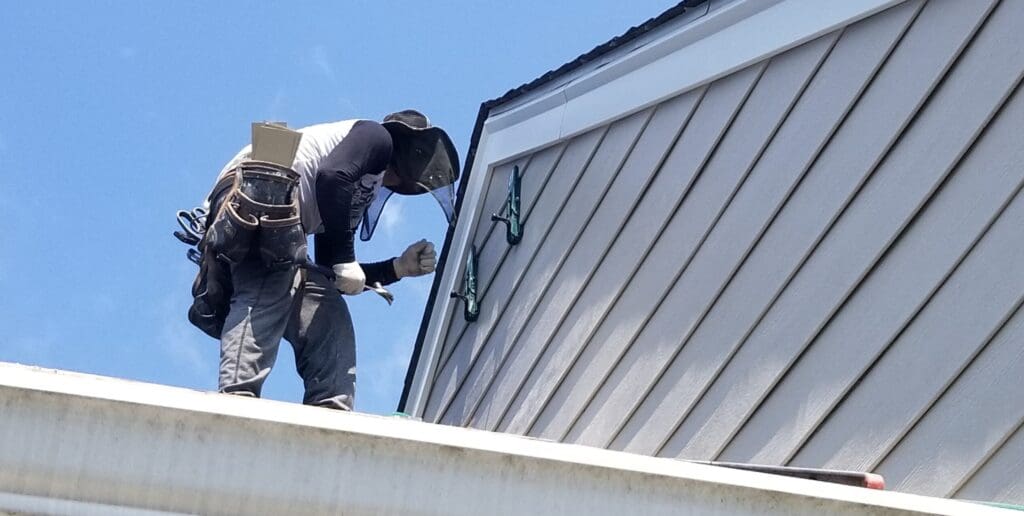Superior Morris Siding Contractor with Comprehensive Siding Services
Superior Morris Siding Contractor with Comprehensive Siding Services
Blog Article
The Important Guide to the Numerous Sorts Of Siding and Their Unique Benefits
In the world of home renovation, selecting the appropriate house siding is an important choice that affects both visual allure and practical efficiency. With so numerous choices to consider, which home siding material absolutely stands out for your certain project?
Timber Siding
Wood house siding, a popular choice for property exteriors, offers a classic visual that integrates natural beauty with architectural stability. This home siding material is readily available in different styles, consisting of clapboard, roof shingles, and board-and-batten, allowing property owners to personalize their façade to match their design preferences. Timber home siding is typically crafted from durable varieties such as cedar, redwood, or ache, which are recognized for their resilience and capacity to withstand environmental stressors.
One of the key benefits of timber house siding is its outstanding insulation buildings, which can add to power efficiency and reduced heating prices. Additionally, timber exterior siding is eco-friendly, making it an eco friendly choice when sourced sustainably. Regular upkeep, including paint or discoloration, can extend its life-span and improve its look, enabling house owners to preserve the natural appeal of the timber.
Nonetheless, potential downsides consist of susceptibility to pests, rot, and weather damage, necessitating ample therapy and maintenance - morris siding contractor. In spite of these worries, when properly cared for, wood home siding can provide a long lasting and gorgeous solution that enhances the personality of a home while offering a warm, welcoming atmosphere

Plastic Exterior Siding
Plastic home siding has actually emerged as a leading option for property owners looking for a low-maintenance outside option that incorporates sturdiness and cost. This versatile product is crafted from polyvinyl chloride (PVC), making it resistant to various weather condition conditions, including wetness and UV rays. Because of this, vinyl siding does not warp, rot, or discolor, guaranteeing lasting visual appeal.
Among the main advantages of vinyl house siding is its substantial variety of shades and styles, enabling house owners to achieve the desired try to find their residential or commercial property without the requirement for regular repainting. Furthermore, vinyl siding is very easy to set up, which can dramatically minimize labor prices throughout construction or improvement projects.
Vinyl home siding likewise contributes to energy effectiveness. Numerous alternatives function insulation support, which enhances thermal efficiency, helping to preserve comfortable interior temperature levels and potentially decreasing power costs. Moreover, its smooth surface area promotes easy cleansing, requiring only periodic washing with a garden hose pipe to get rid of dirt and debris.
Fiber Cement Home Siding
Fiber concrete house siding has actually gotten traction among home builders and homeowners alike because of its remarkable combination of resilience and visual flexibility. Made up of a mixture of cellulose, concrete, and sand fibers, this home siding choice is engineered to endure severe weather problems, including high winds, heavy rain, and temperature level changes, making it a resilient choice for property outsides.

Among the key benefits of fiber cement siding is its resistance to insects, such as termites, and its non-combustible nature, offering boosted fire safety. morris siding contractor. In addition, it is readily available in a broad range of designs, structures, and colors, enabling home owners to achieve their desired visual without compromising performance
One more benefit is its reduced upkeep demands; fiber concrete home siding commonly needs paint or staining every 5-10 years, which is much check that less constant than other products. In addition, its long life adds to a reduced overall price of ownership, as it lowers the demand for constant repair work or substitutes.
Eventually, fiber cement exterior siding stands for an excellent financial investment for those seeking a resistant, appealing, and versatile exterior option, incorporating both form and feature to enhance the home's visual charm.
Steel Exterior Siding
The allure of steel house siding depends on its robust durability and modern visual allure, making it a popular selection for contemporary design. Available in materials such as light weight aluminum and steel, steel house siding provides a variety of surfaces and colors, enabling property owners to attain a personalized look that complements their layout vision.

Energy effectiveness is one more substantial benefit, as numerous metal exterior siding items are designed Discover More Here with insulation options that aid manage indoor temperatures. This can cause decreased energy costs in time. Additionally, steel home siding is often recyclable, making it an environmentally friendly option for sustainability-minded house owners.
The installment process for steel siding can be fairly straightforward, resulting in a quicker turnaround time for building and construction projects. Generally, metal exterior siding incorporates functionality and design, making it a functional option for those seeking a enduring and aesthetically enticing exterior coating.
Block and Stone Siding
Brick and rock house siding stands apart as a timeless choice that enhances the visual beauty of any kind of home. Recognized for their sturdiness and reduced maintenance, these materials supply a phenomenal roi while elevating the building's visual allure. Readily available in different shades, structures, and patterns, block and rock can be customized to match varied architectural designs, from traditional to modern.
Among the primary benefits of block and stone house siding is their energy performance. Both products possess all-natural insulating residential or commercial properties that help regulate interior temperatures, possibly reducing heating & cooling costs. Additionally, they provide premium fire resistance compared to other house siding choices, contributing to improved safety.
One more benefit is their durability. Brick and stone can last for years, frequently requiring minimal maintenance beyond periodic cleansing. Unlike timber house siding, they are invulnerable to bugs and rot, ensuring a lasting outside that endures the components.
Final Thought
In summary, the choice great site of house siding substantially affects a home's aesthetic appeal, energy efficiency, and upkeep needs. Each type of home siding-- whether timber, plastic, fiber concrete, brick, or steel and stone-- provides unique benefits customized to different house owner preferences and ecological problems.
One of the key benefits of wood exterior siding is its outstanding insulation properties, which can add to energy performance and reduced home heating expenses. In addition, timber exterior siding is biodegradable, making it an environmentally pleasant alternative when sourced sustainably.One of the key benefits of metal home siding is its resistance to various ecological factors.Energy performance is one more substantial advantage, as several metal siding items are made with insulation options that help regulate interior temperature levels. Each type of home siding-- whether timber, plastic, fiber concrete, block, or metal and rock-- uses special advantages tailored to different house owner preferences and environmental problems.
Report this page